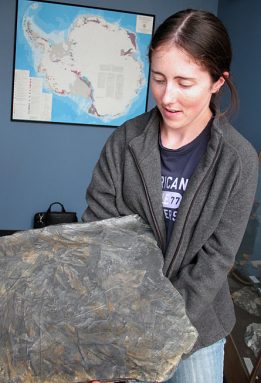Explainer: How a fossil forms

A collection of nearly 200-million-year-old fossils that the author retrieved from the beach on England’s “Jurassic Coast” during a recent vacation.
Sarah Zielinski
Share this:
- Share via email (Opens in new window) Email
- Click to share on Facebook (Opens in new window) Facebook
- Click to share on X (Opens in new window) X
- Click to share on Pinterest (Opens in new window) Pinterest
- Click to share on Reddit (Opens in new window) Reddit
- Share to Google Classroom (Opens in new window) Google Classroom
- Click to print (Opens in new window) Print
Most times, when a living thing dies, it just rots. It leaves no trace that it was ever there. But when the conditions are just right, a fossil may form.
For this to happen, the organism typically must first become quickly buried in sediment on the floor of the sea or some other body of water. Sometimes it may even land in something like a sand dune. Over time, more and more sediments will pile atop it. Eventually compressed under its own weight, this growing accumulation of sediment will transform into hard rock.
Most organisms buried in that rock will eventually dissolve. Minerals may replace any bone, shell or once-living tissue. Minerals also may fill in the spaces between these hard parts. And so a fossil is born.

Some of these fossils contain important information about how an animal lived or died. Or they might even provide clues to ancient climate.
Fossils come in other forms, too. They can be any trace of an ancient living thing. For instance, scientists consider ancient, preserved footprints and burrows to be fossils. For these trace fossils to form, the impression they make on sediment has to quickly harden or get buried in sediment and remain undisturbed until it can be transformed into rock. Even animal poop can form trace fossils, called coprolites.
Most people associate fossils with animals. But plants and other types of organisms also can leave preserved traces. And they tend to form in much the same way as animal fossils. A special type of fossil is called petrified wood. It forms in the same way as do fossils of dinosaurs or other creatures. They often look similar to real wood, though. In this case, colorful minerals have moved in and replaced tree tissue.







